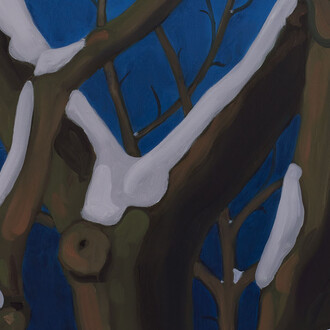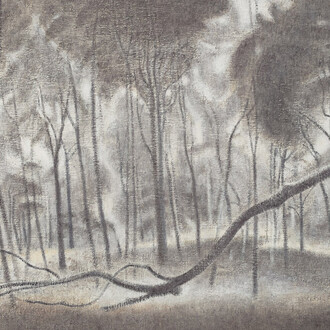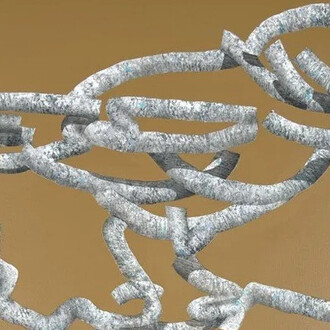Salvatore Meo (1914-2004) was a native of Philadelphia but made Rome his home since the 1950s. He saw this iconic city in its poverty stricken post-war years and witnessed the 1960s world of the glitterati portrayed in Fellini’s La Dolce Vita. Meo might even have watched the weeklong filming of Marcello Mastroianni and Anita Ekberg frolicking in the Trevi Fountain on the street just in front of his studio. That studio is now home to the Fondazione Salvatore Meo, devoted to the preservation and study of his work and directed by Mary Angela Schroth, who also founded Sala Uno, a space dedicated to contemporary art. She is the curator of this exhibition.
Meo exhibited widely in the 1950s through the mid 1970s and was an important and influential figure on the burgeoning contemporary art scene that included Alberto Burri, Luigi Fontana and Roberto Matta. He was visited and probably influenced the young Robert Rauschenberg and Cy Twombly who visited his Roman studio at the very beginning of their careers. Meo’s work was included in the landmark 1961 Museum of Modern Art exhibition The Art of Assemblage that also included Marcel Duchamp, Kurt Schwitters, and Pablo Picasso and exhibited in the US and Italy regularly. After his early success, Meo rejected the art world and became a recluse but continued to produce work in obscurity in his Roman studio until his death at the age of 90.
Meo also rejected the glamorous world of la dolce vita and the new Pop Art that was emerging. His work – which was at the forefront of the Arte Povera movement – consisted primarily of humble objects found on the street and preferred the poetic exploration of abandonment and decay. The materials for his assemblage consist of discarded gloves, doll parts, torn fabric, and rusted metal that had been casually thrown away. To paraphrase the late William C. Seitz, curator of MoMA’s The Art of Assemblage, the term “denotes not only a specific technique but a complex of attitudes and ideas…an investment of matter with spirit.” Salvatore Meo gave the detritus of everyday life a poetic soul.
Salvatore Meo and the Poetics of Assemblage is made possible by made possible by the Museum’s Exhibition Leadership Fund with major support generously provided by the Estate of Ardele L. Garrod, the Estate of Ruth Feigl, Jody H. & Martin Grass, Dalia & Duane Stiller, Steinberg Global Asset Management, Ltd., Art Alliance of Contemporary Glass, and the Museum’s Friends Auxiliary. Additional support is provided in part by the City of Boca Raton; the Board of County Commissioners, the Tourist Development Council and the Cultural Council of Palm Beach County; the State of Florida, Department of State, Division of Cultural Affairs and the Florida Council on Arts and Culture. Additional support is generously provided by our Members and Donors.












